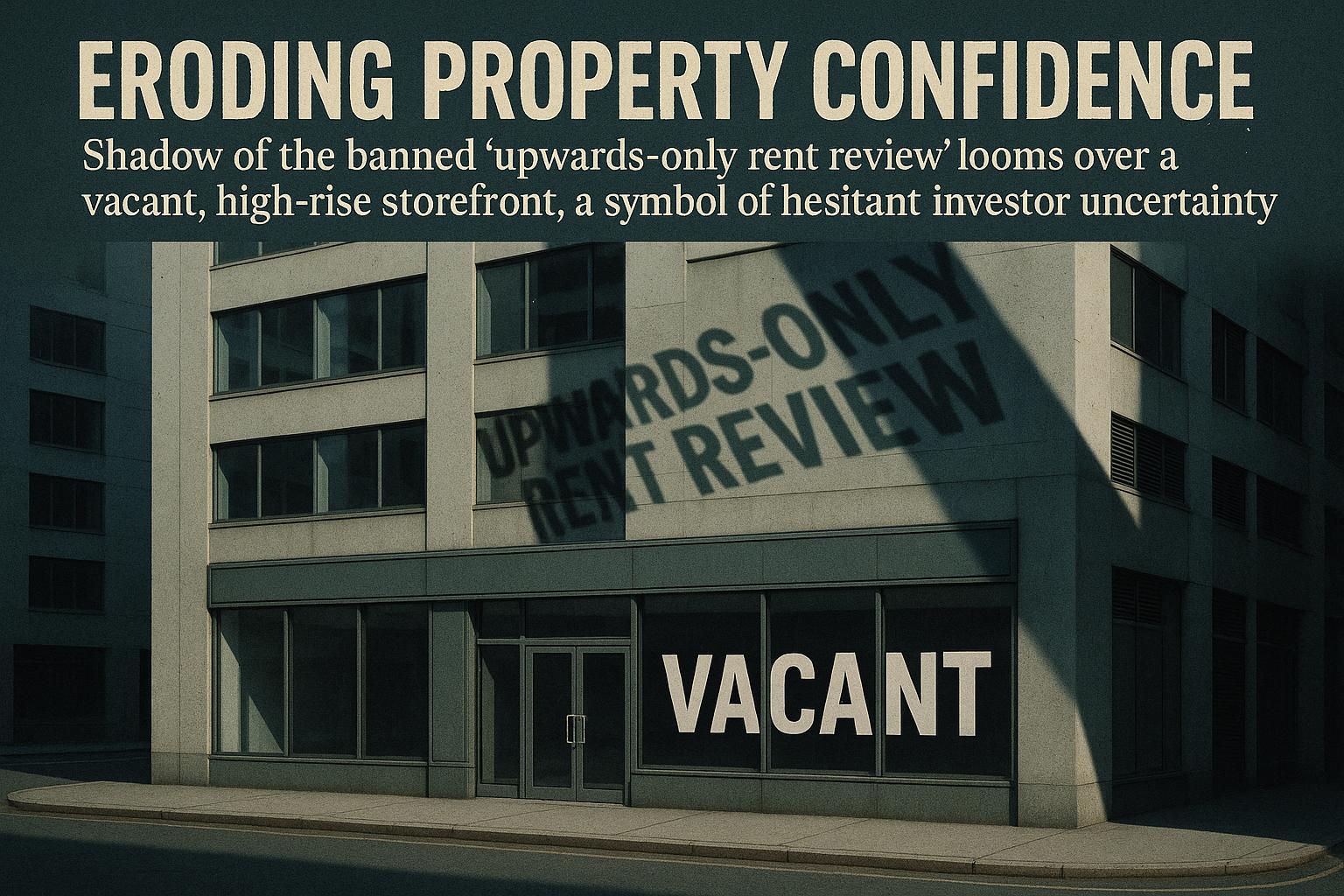The English Devolution Bill has introduced a proposal that could significantly reshape the commercial property leasing landscape: a ban on upwards-only rent reviews in all new leases. This longstanding mechanism, which propels rent only upward during review periods, has drawn considerable opposition from landlords and investors. Conversely, occupiers have responded with a mix of cautious optimism and scepticism regarding the potential changes.
Upwards-only rent review clauses came into prominence during the high inflation periods of the 1960s and 1970s. At that time, landlords sought to shield their investments from erosion of value caused by inflationary pressures, and banks increasingly demanded these clauses to protect their lending portfolios. Over time, such rent review provisions became market standard, offering landlords security by preventing rent decreases during lease renewals.
The proposed ban aims to replace this model with upwards-downwards rent reviews, where rents could go up or down based on market conditions. While seemingly fairer to tenants, this shift may inadvertently discourage investment in real estate by increasing the risks borne by landlords and lenders. Industry commentators warn that if investor confidence declines, new development projects might dwindle, reducing supply and potentially driving rents higher rather than lower—an ironic outcome that may run counter to legislators' intentions.
Landlords are likely to respond to this regulatory change with alternative risk-mitigation strategies that may ironically pass costs or uncertainties to tenants. Emerging trends may include shorter lease terms—already on the rise—which often fall outside the protections of the Landlord and Tenant Act 1954 but lack security of tenure. Tenants could also encounter higher initial rents as landlords seek to front-load income before rent reviews. Stepped rent agreements, whereby rents increase at predetermined intervals without the possibility of reductions, might replace uncertain market reviews.
There is also anticipation that more leases will incorporate indexation clauses, where rents adjust according to inflation but with a market review floor, effectively preventing rental reductions. Although theoretically both indices and market reviews could move downward, landlords might leverage this arrangement to maintain upward pressure on rents. Added lease breaks giving landlords exit options post-review and an increase in review frequency could create rent volatility and administrative challenges, including complexity around paying Stamp Duty Land Tax (SDLT). Another possible landlord strategy could extend turnover-based rent elements—long confined to retail leases—to office leases, tying rent to tenant business performance, which would mark a significant market shift.
A further complexity arises with sub-leases. Many head leases require sub-leases to mirror their rent review structure, meaning existing leases with upwards-only clauses may conflict with the new legal regime banning such terms in sub-leases. Tenants might grant sub-leases containing unenforceable upward-only rent reviews to comply with headlease conditions, creating ambiguous legal situations. Critics note the legislation lacks clear guidance on addressing this widely encountered scenario, adding to tenant uncertainty.
The optics of banning upwards-only rent reviews present an image of fairness for tenants who have long criticised the perceived one-sidedness of such clauses. However, the practical consequences—shorter leases, higher rents, more frequent reviews, and novel landlord controls—may offset anticipated tenant benefits. This illustrates the difficulties in balancing the interests of landlords and occupiers within a changing market and regulatory framework.
This restructuring of commercial leasing law takes place amid wider reforms in the UK aimed at improving renting conditions. Aside from commercial property, the UK government has been advancing tenant protections in the residential sector through the Renters’ Rights Bill. This legislation seeks to end no-fault evictions (Section 21), ban rental bidding wars and in-tenancy rent increases embedded in contracts, and prevent discriminatory rental practices against families and benefit recipients. It also introduces the Decent Homes Standard for private rentals and grants tenants the right to keep pets, all measures designed to provide renters with greater security and stability in their homes.
Meanwhile, in Scotland, temporary rent caps introduced to curb rapid rent rises and moratoriums on evictions are set to expire. Current rules cap private rent increases at 3%, with up to 6% allowed in exceptional cases until April 2024. Tenants in Scotland can contest rent increases via Rent Service Scotland or the First-tier Tribunal, where rent adjudications are restricted from setting rents above landlords' proposed amounts, a provision designed to encourage more tenants to challenge proposed hikes without fear of higher rents being imposed.
In England, regulated or ‘fair rents’ under the valuation oversight of the Valuation Office Agency impose limits on how much landlords may increase rent, usually capped to periodic reviews every two years or earlier if value changes. For private tenants, annual rent increases require either contractual permission for fixed terms or agreement for periodic tenancies, with avenues through tribunals to contest unfair rises.
As the English Devolution Bill ushers in new frameworks for commercial leases, tenants and landlords alike will need to navigate emerging complexities carefully. The intended protections for tenants may risk creating unforeseen side effects, highlighting the intricate balance between fair rental practices and a stable, attractive investment environment for landlords.
📌 Reference Map:
- Paragraph 1 – [1], [4]
- Paragraph 2 – [1]
- Paragraph 3 – [1]
- Paragraph 4 – [1]
- Paragraph 5 – [1]
- Paragraph 6 – [1]
- Paragraph 7 – [2], [4]
- Paragraph 8 – [3], [6]
- Paragraph 9 – [5], [7]
- Paragraph 10 – [1], [2], [3]
Source: Noah Wire Services
